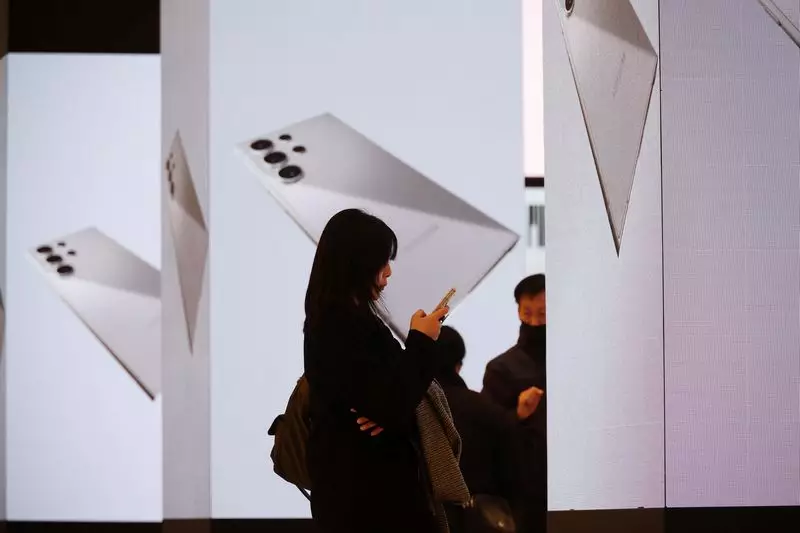In a recent announcement, Samsung Electronics showed a significant uptick in its third-quarter profit compared to the same period last year. Reporting an operating profit of 9.2 trillion won (approximately $6.66 billion) for the July to September period, Samsung’s performance reflects a robust increase from the previous year’s profit of 2.4 trillion won. However, this positive growth comes with a caveat: the company is witnessing a decline in the pace of recovery compared to the previous quarter, where it achieved a profit of 10.4 trillion won. This slowdown signals underlying challenges as the tech giant navigates its operational landscape, particularly amidst the booming artificial intelligence (AI) market.
Despite the noticeable ascent in earnings, Samsung finds itself in a precarious position regarding its chip manufacturing sector. Competitors such as TSMC and SK Hynix have capitalized on the burgeoning demand for AI-related chips, leaving Samsung trailing in this domain. The tech conglomerate hinted at its struggles to secure significant sales with its advanced chips designed for major clients, including undisclosed high-profile customers. This situation is compounded by an increase in the availability of traditional chips from competing Chinese firms, which puts further pressure on Samsung’s market share in fundamental chip categories.
Looking ahead, Samsung’s outlook for the current quarter appears muted, as expectations for balanced earnings growth have been tempered. The company anticipates that gains from its chip manufacturing division will be balanced out by anticipated weaknesses in its “set” business. This segment includes core products such as smartphones, televisions, and home appliances. Samsung has been relatively reticent regarding specific challenges faced within this category, making it difficult to project how these factors may impact future sales.
In contrast to its struggles, rivals like SK Hynix and TSMC have reported robust profits, benefitting directly from the increased demand for AI chipsets, particularly those produced for industry leader Nvidia. This disparity highlights a crucial gap between Samsung’s performance and that of its competitors. The ability of rival companies to harness the potential of the AI market underscores a growing urgency for Samsung to enhance its product offerings and respond more adeptly to market demands.
As Samsung navigates a complex landscape characterized by fluctuating profits and intense competition, its ability to adapt to evolving industry trends will be paramount for sustaining growth. The current landscape presents both challenges and opportunities, particularly within the rapidly emerging AI segment. To remain competitive, Samsung must not only solidify its position in traditional markets but also prioritize advancements in cutting-edge technologies that align with market demands, facilitating a path toward sustained profitability and market relevance in the coming quarters.

